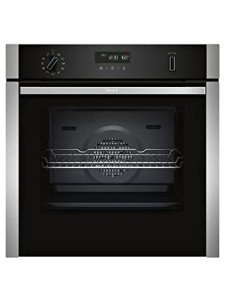The Self-Cleaning Oven Cycle: An Informative Guide
Cleaning an oven can be a tough and often feared chore for numerous households. However, modern technology has supplied a service to this prevalent hassle: the self-cleaning oven cycle. This post aims to offer an extensive introduction of the self-cleaning oven cycle, how it works, the various types of self-cleaning cycles readily available, safety concerns, and maintenance tips to keep your oven in top condition.
Comprehending the Self-Cleaning Oven Cycle
Self-cleaning ovens run on the concept of high heat to burn away food residue, grease, and grime. This process changes remaining particles into ash, which can then be quickly wiped away.
How Does It Work?
The self-cleaning process typically includes the following actions:
- Preparation: Remove all racks, pans, and other items from the oven, as they might not stand up to the heats.
- Initiation: The user chooses the self-cleaning cycle on the oven's settings.
- Heating: The oven heats up to exceptionally heats (typically in between 800 ° to 1,000 ° F or 427 ° to 538 ° C)for a specific period, generally lasting from 2 to 6 hours.
- Cooling off: After the cleaning cycle has actually finished, the oven must cool off before the door can be opened.
- Clean Down: Finally, when cooled, any ash residue inside the oven can be easily wiped away with a wet cloth.
Table 1: Comparison of Self-Cleaning Oven Features
| Feature | Conventional Self-Cleaning | Steam Cleaning | Routine Oven |
|---|---|---|---|
| Cleaning Method | High heat incineration | Steam and heat mix | Manual scrubbing |
| Time Required | 2-6 hours | 30-90 minutes | Varies |
| Temperature | 800 ° -1,000 ° F(427 ° -538 ° C) | 212 ° F-300 ° F(100 ° C-149 ° C)Depends on cooking | |
| Safety Concerns | Yes (high heat) | Less | Moderate |
| Alleviate of Use | High | Moderate | Low |
Kinds Of Self-Cleaning Ovens
Self-cleaning ovens come in numerous types. Each has distinct features that deal with different needs and choices.
1. Traditional Self-Cleaning Ovens
These ovens utilize high temperatures to turn food debris into ash. They are the most typical and efficient self-cleaning method.
2. Steam Cleaning Ovens
This variation utilizes steam and lower heat levels to clean the oven interior. It's considered more environmentally friendly and can be less pungent than conventional techniques.
3. Manual Clean Ovens
While not technically self-cleaning, some ovens are created with easy-to-clean surfaces that reduce scrubbing effort.
Safety Concerns
Although self-cleaning ovens work, there are a number of safety issues that users need to be mindful of.
Safety measures to Take
- Ventilation: Ensure correct ventilation throughout the cleaning cycle to dissipate any smoke or smells.
- Supervision: It is suggested to stay present while the self-cleaning cycle is in progress.
- Pet Safety: Keep family pets far from the kitchen area to prevent any unintentional threats due to heat or smoke.
- Kid Safety: Use lock features to prevent children from accessing the oven throughout cleaning.
Maintenance Tips
To ensure that your self-cleaning oven operates effectively, follow these maintenance tips:
- Regular Use: Engage the self-cleaning cycle every couple of months, or whenever you notice a buildup of grime, to keep your oven in optimum condition.
- Check Seals: Examine the door seals regularly to ensure that they are intact, as damaged seals can result in heat loss and impact performance.
- Tidy Manual Components: For locations that are not cleaned automatically, such as door glass and racks, use non-toxic cleaning options to keep look and functionality.
- Prevent Using Foil: Do not line the oven with aluminum foil, as it can restrict airflow or trigger damage throughout the self-cleaning cycle.
Table 2: Maintenance Tips for Self-Cleaning Ovens
| Job | Frequency | Notes |
|---|---|---|
| Run Self-Clean Cycle | Every 3-6 months | Use when heavily stained domestically. |
| Inspect Seals | Monthly | Make sure seals are intact and tidy. |
| Handbook Clean Components | Month-to-month | Usage non-toxic services. |
| Usage Aluminum Foil | Never ever | Can trigger damage and limit air. |
Often Asked Questions (FAQs)
1. Is the self-cleaning oven cycle safe?
Yes, self-cleaning ovens are designed with safety in mind. However, it is crucial to follow the maker's precautions.
2. How often should I utilize the self-cleaning cycle?
It's generally advised to run the self-cleaning cycle every 3 to 6 months, depending upon usage. If you regularly bake or roast, more regular cleaning may be needed.
3. Can I leave my oven unattended throughout the self-cleaning cycle?
While many contemporary self-cleaning ovens include safety features, it's suggested to monitor the cycle to manage any unanticipated problems.
4. Do self-cleaning ovens use a lot of energy?
Self-cleaning ovens do take in a substantial quantity of energy throughout the process due to the high temperature levels. However, this is usually a one-off usage every few months.
5. What should Suggested Internet page do if the self-cleaning cycle fails?
If the oven stops working to finish the self-cleaning cycle, speak with the user manual for fixing tips, or get in touch with an expert specialist.
The self-cleaning oven cycle uses a convenient way to keep a clean cooking environment while lessening the effort needed. Understanding its performance, types, safety precautions, and maintenance tips permits users to make the most of this contemporary device function. By incorporating regular self-cleaning cycles into cooking area regimens, users can take pleasure in a shimmering tidy oven with minimal hassle.

